-

How to Make Park Buildings Safer for Birds, One Window at a Time
National Park Service scientists looked at ways to reduce bird collisions with glass in national parks. They show how small actions can have big outcomes. Author Adam Reimer points to one of the nearly invisible dots that make birds avoid… Read More »
-
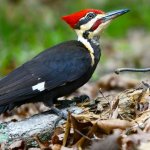
Bird-friendly Garden Tips for Fall
The tanagers, orioles, and hummingbirds of summer are gone, but despite what chilly weather portends, this is a great time to intensify efforts to help birds in your garden. What you do today to provide food, shelter, and nesting opportunities… Read More »
-
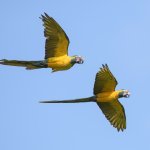
Our North Stars: 30 Birds, 30 Years — Part One
https://youtu.be/gslKhfjpdzI Meet 30 bird species from across the Western Hemisphere that ABC has helped to conserve in the last three decades. In the 30 years since American Bird Conservancy was founded, we and our partner groups throughout the Western Hemisphere… Read More »
-
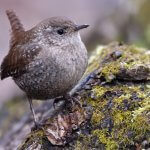
Winter Wren
One of the smallest wrens in North America, the inconspicuous Winter Wren is easy to mistake for a mouse as it creeps about its favored forest and riparian habitats. Patient observers will eventually catch sight of a tiny brown ball… Read More »
-
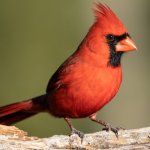
Northern Cardinal
Northern Cardinal range map by ABC In the East, few birds are as familiar and well-loved as the Northern Cardinal. The male "Redbird" is unmistakable, with a distinctive crest and vivid red plumage, which is rivaled perhaps only by the… Read More »
-
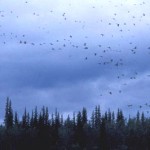
Migrating Birds Could Use a Helping Hand
10 Ways People Can Protect Birds This Spring Birds migrating. Photo: © FWS (Washington, D.C., March 31, 2010) As warmer temperatures begin to arrive and we spend more time outdoors, we hear the many, familiar sounds of spring, including the… Read More »
-
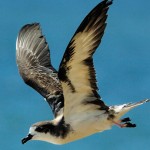
Feral Cat Resolution on Hold in Hawai'i's Kaua'i County
Contact: Robert Johns, 202-234-7181 ext.210, Hawaiian Petrel by Jim Denny (Washington, D.C., June 28, 2011) Advocates for Hawai'i's imperiled native birds are applauding a decision by the Kaua'i County Council to set aside a resolution that would have endorsed a… Read More »
-
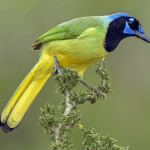
How Does Climate Change Impact Birds?
Bird populations are declining around the world. And while many factors contribute — from habitat loss to pesticides, outdoor cats, and window collisions — it is increasingly clear that climate change is an important driver behind this worrying trend. Climate… Read More »
-
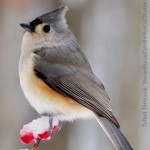
Top Five Holiday Gifts to Help Birds
Looking for holiday gifts to help birds? With 45 million Americans who enjoy bird watching, there certainly is a demand for bird-inspired presents. The experts at American Bird Conservancy have five suggestions that can help solve that gift-giving dilemma and… Read More »
-

Searching for Inspiration for Your Bird City Application? Here Are 5 Ideas
Beach cleanups like this one along the Texas Gulf Coast are a great way to help qualify as a Bird City. Photo by American Bird Conservancy With the recent launch of Bird City Network, you and your community might be… Read More »
-

Spooky Tips to Ensure Only Treats and No Tricks for Birds This Halloween
Halloween decor can be festive, but it’s important to keep birds in mind so that it’s only treats and no tricks for everyone. Photo by Kosoff/Shutterstock. You may have noticed it. The chill in the air. The leaves crunching under… Read More »
-
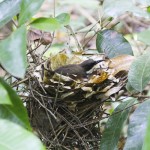
The Art of Waiting on St. Lucia's White-breasted Thrasher
By Kate Freeman While the Caribbean island of St. Lucia has many aspects of a tropical paradise, working in this forest is not exactly white sand and turquoise water. Snake chaps are a critical part of my field gear, as… Read More »
-
Amid Powerful Storms, Bahama Oriole Clings to Existence
Editor’s note: As Hurricane Irma tore through the Caribbean this week, leaving a path of devastation across several islands, biologist Kevin Omland had his eyes on the Bahamas. The critically endangered Bahama Oriole, the focus of Omland’s research, survives only… Read More »
-
10 Biggest Conservation Wins for Birds in 2018
From attacks on cornerstone bird protections to new drilling threats in sage-grouse country, 2018 held no shortage of challenges for birds and bird conservation. Despite these growing threats, American Bird Conservancy and its partners scored some remarkable wins over the… Read More »
-
Five Fantastic Bird Migration Facts
Many people know that bird migration has been going on for ages (millions of years, in fact), and that it happens twice a year. But when you stop and ponder the details, migratory birds' epic journeys are nothing less than… Read More »
-
Trail Camera Photos Reveal Wildlife Secrets
The history of trail camera pictures likely dates back to the early 1900s, when former U.S. Congressman George Shiras rigged a camera and explosive magnesium-powder flash to string and rope trip lines. Today, tiny infrared motion sensors, compact flashes, and… Read More »
-
Do American Robins Migrate?
Springtime singer or snowy sentinel? The American Robin may be one of North America's most familiar songbirds, yet its wintering patterns raise a common question: Do robins migrate? The answer is yes and no. We associate robins with spring for… Read More »
-
Seven of the Coolest Sparrows in the United States
In North America, it’s easy to enjoy sparrows. You can find them in almost any habitat. They can occur in large (although decreasing) numbers, sing beautifully (for the most part), and reliably cheer up backyard feeders. What’s not so easy… Read More »
-
At Home in the Cold: An Intro to the World of Winter Birds
Sure, winter can be dark, cold, and barren in the northern U.S., but that doesn’t mean it isn’t a great time to see birds. After all, winter heralds the arrival of Dark-eyed Juncos, the famous snowbirds, and other visitors such… Read More »
-
Inca Tern
This striking bird occupies part of the same habitat ruled by the ancient Inca Empire in South America. Inca Terns are best known by their dashing white mustaches, which are found on both male and female birds. The species is… Read More »












































